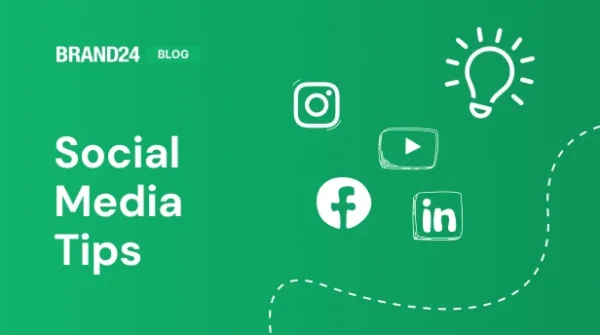Content Curation – Provide Valuable Content Without Creating It
We live in a world full of random information. In many cases, we tend to acquire new knowledge by accident. We never know if we missed some crucial news. And, which is even more important, in most cases, we don’t have enough expertise to evaluate the significance of the new information. People feel that they are overloaded with the information chaos, that’s why they are looking for new ways to organize it.
Content curation can become a cure for this problem. And for brands, it may constitute an opportunity to be of some help for the potential clients. So what exactly content curation is? It’s a process of collecting, analyzing, selecting and presenting the content addressed at the target audience.
This idea is not new and it does work perfectly e.g. in art. And probably most of you act partially as the content curators. Most of the Facebook profiles and Twitter accounts are made out of links found on the internet.
Somebody said that content curation is a lifeblood that drives the social media. But in my opinion, usually, it makes the chaos even bigger. We try to share so much content and we don’t select it perfectly and we don’t explain our choices to the audience. To become a real curator, you should make decisions on the content you recommend and explain your choices. So let’s start from the beginning and analyse your content curation strategy together.
Why?
First, you have to ask yourself why you need to curate content instead of creating it. Creating content (mostly blog posts) makes Google page rank better, organic visits are more frequent and you can add a call to action to your post, which should bring you some income (sooner or later). Content curation is a not so obvious. Once you become an expert for your clients, you gain credibility, and then the clients will be loyal, ultimately – they will need your expertise. I recommend to be both a good curator and creator, then the effects of your job will be very well pronounced.
For whom?
As always in, case of any strategy you are using, you have to consider who your target is. You can use your client’s profile, but probably you would have to supplement it with attributes characteristic for content curation. So you have to consider what information your clients are looking for, what they need, and how you can help them.
What?
When you know what information is important for your target group, then you should find a way to collect and evaluate the content. Remember – curation is not being realized by throwing random stuff towards the readers of your Facebook wall.
Firstly you have to be well oriented in the particular field. Secondly you have to consume a lot of content. Next you should select the best (most valuable) ones, and at the end explain why it is crucial. This information has to be useful for them and someway hard to get without your help. You can segregate the information, translate news from other languages, look for specific data in long reports. Of course you can use some tools to optimize the process of selection like Scoop.it, Feedly or Pocket.
See also: Best Content Curation Tools.
Where?
Channel is strictly connected with your target group. You have to be in the place, where your clients are. The list is long, but the most common places include the following:
- Facebook or Twitter. The most obvious ones. Be consistent and persistent, and post links connecting the audience with some valid news. You can also regularly post news of the day, or number of the day or persona of the week, to create a
feeling of longing for something, to make your reader feel as if he was longing for a new episode of the TV series. You can also create a post (just on Facebook) with multiple links – something like a newsletter. To increase the visits count on your webpage you can use tools like Snip.ly
- Use Mailchimp, GetResponse or other mailing tool, in order to send your newsletter to the valid subscribers. But don’t send spam, always try to be informative.
- Create blog post with links and provide some short descriptions along. Some people recommend to reblogging the post from other blogs. But you have to be really cautious here – people can treat it as stealing their own intellectual property.
- You can host a vlog on topic that is interesting for your industry.
- Create boards with useful content e.g. the best infographics, pin placed on the group boards
- In order to present your content. you can use tools like Paper.li or Uberflip.
How
Now, here is the most important part. If the users are overloaded by information, they don’t know if what you are doing is curation or not. You have to clearly state that the content you present is being curated, you have to explain why you select it, why it is important. People should feel that this selection comes from your experience, and that they can trust you. Be confident and use phrases like: “news you have to know”, “the most important data this day”, “4 articles that will change the world” etc.
See also: Twitter Content Curation: Use the Power of SELFIES!
Are you ready?
Content curation is a long but satisfying journey. You will have to spend many hours doing that, however in the end you’ll find a way to optimize this process. And – which is great about the process – it is a constant learning curve.
What is your content curation strategy? Leave us a comment!
About the Author:
Michał Majewski is an entrepreneur and communication specialist. He is the CEO and Co-founder of PublishSoSimply – the unique digital publishing platform for content marketers. He works as an academic teacher at Collegum Da Vinci. He runs a blog on the INNPoland platform – a Polish blog on innovations.
Related articles
 feeling of longing for something, to make your reader feel as if he was longing for a new episode of the TV series. You can also create a post (just on Facebook) with multiple links – something like a newsletter. To increase the visits count on your webpage you can use tools like Snip.ly
feeling of longing for something, to make your reader feel as if he was longing for a new episode of the TV series. You can also create a post (just on Facebook) with multiple links – something like a newsletter. To increase the visits count on your webpage you can use tools like Snip.ly
![Duolingo Social Media Strategy: How Effective is it? Report [2025]](https://brand24.com/blog/app/uploads/2025/03/duolingo_digital_marketing_blog_cover_615x345-1-600x335.webp)


![5 Most Important Uber Competitors in 2025 [Report]](https://brand24.com/blog/app/uploads/2025/03/uber-competitors-600x335.webp)
![Top 5 Biggest Airbnb Competitors in 2025 [Data-Backed Analysis]](https://brand24.com/blog/app/uploads/2025/03/airbnb_competitors_digital_marketing_blog_cover_615x345-600x335.webp)